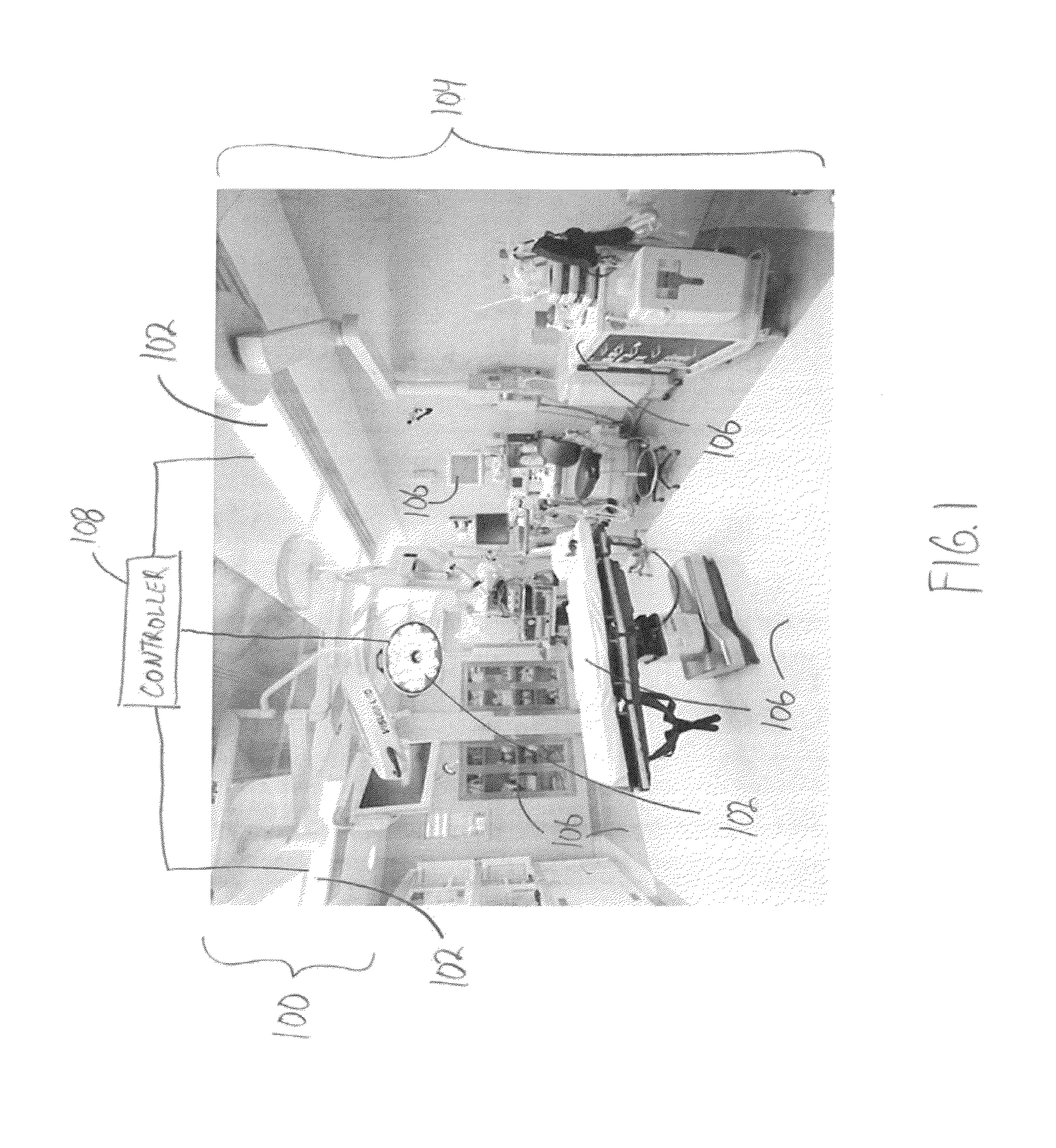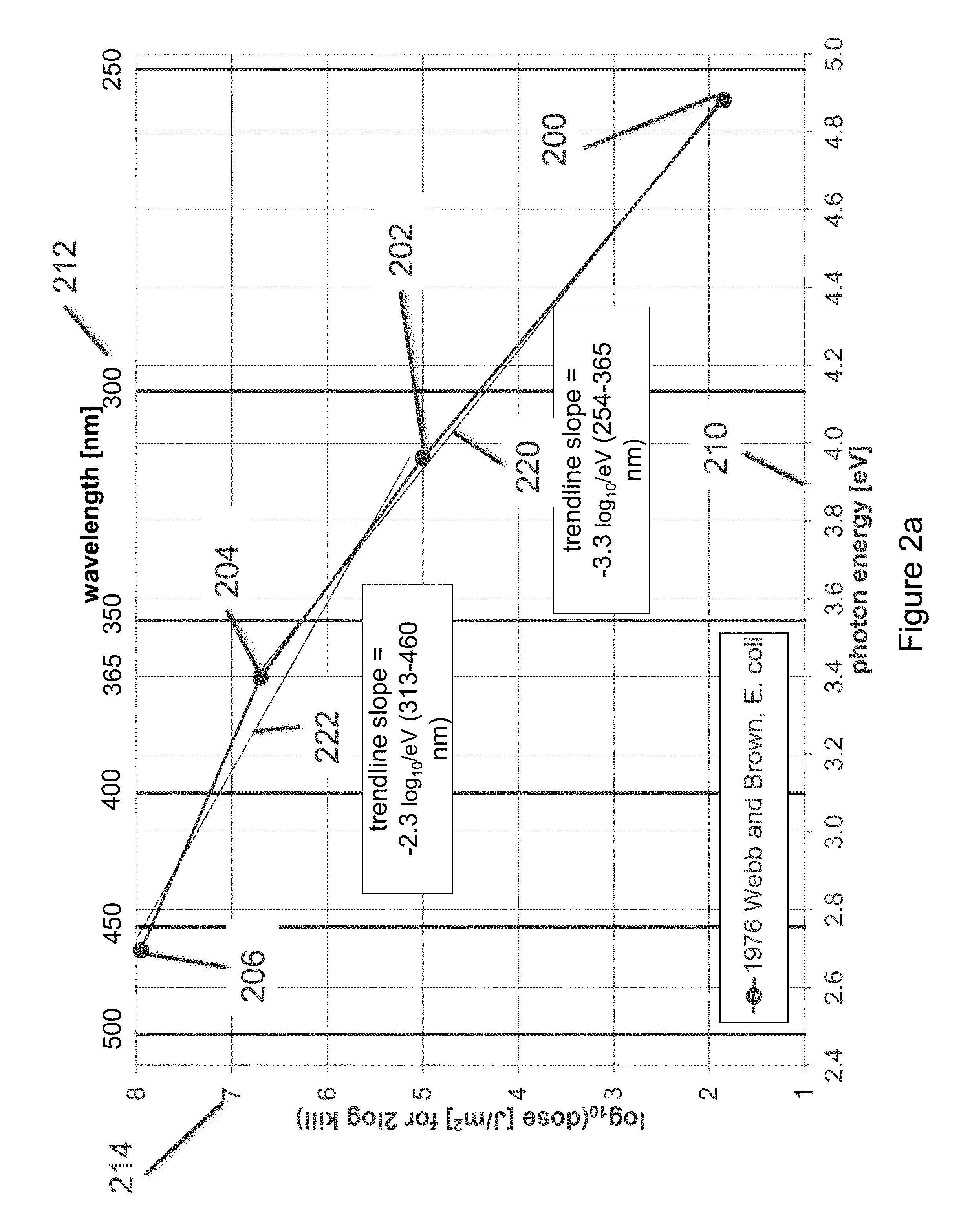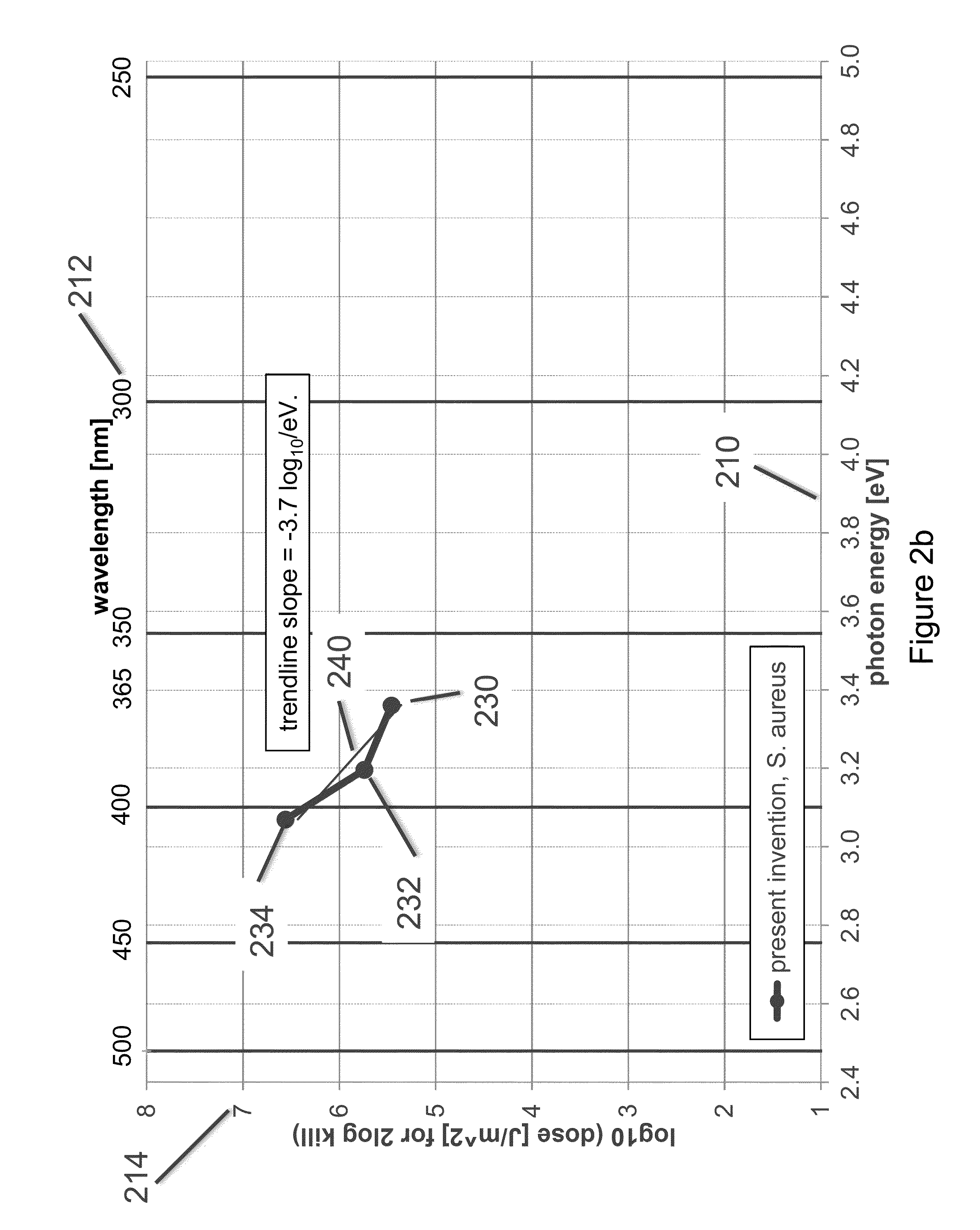Light disinfection system and method
a technology of disinfection system and light, applied in the field of light disinfection system, can solve the problems of inability or less of replication, inability to infect a human, and human exposure to light of these germicidal wavelengths, and achieve the effects of reducing the risk of human exposure to ligh
- Summary
- Abstract
- Description
- Claims
- Application Information
AI Technical Summary
Benefits of technology
Problems solved by technology
Method used
Image
Examples
Embodiment Construction
[0028]One or more embodiments of the inventive subject matter described herein employ one or more light sources generating light that inactivates pathogens with an inactivation rate that follows a kinetic dependence, or relationship, between the energy of photons of the light and the inactivation rate. In one embodiment, this kinetic energy dependence, or relationship, can provide for an inactivation rate (e.g., a rate at which pathogens are inactivated so that the pathogens are no longer able or operable to cause disease in living organisms) that increases by a factor of ten for each 0.27 to 0.44 eV increase in the photon energy of the light. Therefore, an inactivation rate that is comparable to the inactivation rate achieved using light of about 405 nm (3.06 eV) can be achieved at a wavelength of about 355 nm (3.50 eV) to about 372 nm (3.33 eV), corresponding to 0.44 to 0.27 eV increase per factor of 10 inactivation rate increase, respectively, using only about 10% of the power us...
PUM
 Login to View More
Login to View More Abstract
Description
Claims
Application Information
 Login to View More
Login to View More - R&D
- Intellectual Property
- Life Sciences
- Materials
- Tech Scout
- Unparalleled Data Quality
- Higher Quality Content
- 60% Fewer Hallucinations
Browse by: Latest US Patents, China's latest patents, Technical Efficacy Thesaurus, Application Domain, Technology Topic, Popular Technical Reports.
© 2025 PatSnap. All rights reserved.Legal|Privacy policy|Modern Slavery Act Transparency Statement|Sitemap|About US| Contact US: help@patsnap.com



